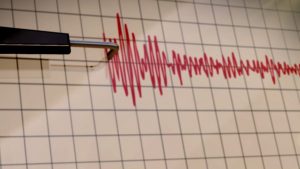The massive blizzard that walloped New York on Saturday came up one-tenth of an inch short of history. The storm dumped a whopping 26.8 inches of snow on the city, just short of the record set in 2006 and the second most snowfall since the city began keeping records in 1869.On Sunday, New Yorkers began digging themselves out from under the thick blanket of snow. After the winter storm, which was dubbed Jonas, brought the city to a virtual standstill with non-stop snowfall and 80-mph wind gusts, the following morning was clear and sunny. Central Park buzzed with dog walkers, joggers, and cross-country skiers, while drivers on adjacent streets shoveled out their completely submerged cars.
It was a stark contrast the night before, when an otherworldly quiet descended on the usually bustling city of 8.5 million. Mayor Bill de Blasio ordered all non-emergency vehicles off the streets by 2:30pm on Saturday, and warned parents against letting their kids play outside. Some tourists and residents still took to city streets, building snowmen, chucking snowballs, and snapping photos of the city shrouded in white.
The travel ban was lifted at 7am on Saturday morning, and most subway trains were up and running, but with significant delays and service changes. All flights from New York’s JFK and La Guardia airports were cancelled Saturday, and about 3,500 flights were canceled on Sunday. Some flights were landing at JFK on Sunday, however, and takeoffs were set to resume later in the afternoon. Still, more than 600 flights were already canceled for Monday, according to FlightAware.com, the aviation data and tracking website.
New York Governor Andrew Cuomo declared a state of emergency, as did 10 other governors on the East Coast. At least 19 people were killed during the storm, including 13 people who died in weather-related car crashes in Arkansas, North Carolina, Kentucky, Ohio, Tennessee, and Virginia on Saturday. One person died in Maryland and three in New York while shoveling snow. Two died of hypothermia in Virginia.
Around 90,000 homes in New Jersey were without power. Flooding in southern New Jersey was reportedly comparable to or worse than the damage caused by “Superstorm Sandy,” the hurricane that slammed the region in 2012. The tide recorded on Saturday morning in New Jersey’s Cape May broke the previous record set during Sandy.
Tides were expected to reach as much as three feet above normal across the New Jersey coast, and some residents had to be evacuated. In the town of Wildwood, emergency workers in inflatable boats rescued more than 100 people from homes.
The National Weather Service recorded 17.8 inches of snowfall in Washington, DC, tying the fourth-largest snowfall in the city’s history. Mayor Muriel Bowser issued a call for 4,000 people to help dig the city out, above the 2,000 volunteers that already signed up. The Washington Metropolitan Area Transit Authority, which includes the second-busiest US subway system, suspended operations through Sunday.




